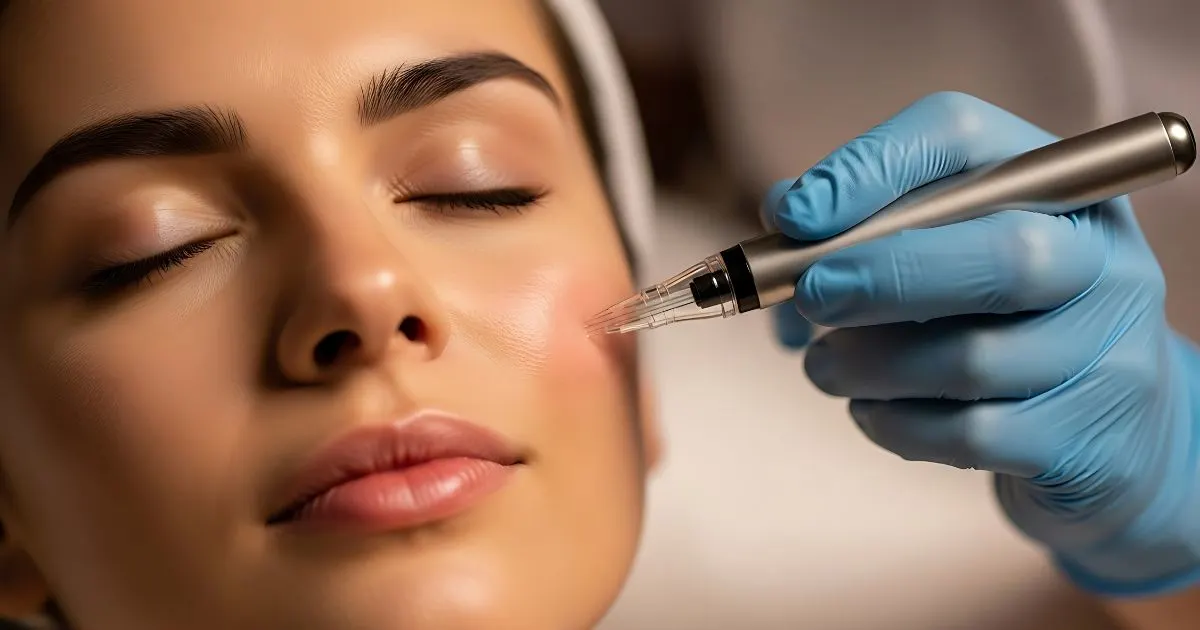
Table of Contents
Laser hair removal has revolutionized how people achieve smooth, hair-free skin, offering a long-lasting solution to unwanted hair. This advanced, non-invasive treatment precisely targets hair follicles, significantly reducing future growth and delivering lasting results. Adam J. Cohen, MD, provides a distinct wellness experience for those considering this procedure. By focusing on the pigment in the hair, laser technology efficiently reduces unwanted hair in various body areas, making it a more permanent option than other hair removal methods. Learning how the treatment works and what to expect can help determine the right choice.
Understanding the science behind laser hair treatment is crucial to making an informed decision. We’ll explore the process, technology, and what to expect when choosing the best laser hair removal treatment.
How Laser Hair Removal Works
In laser hair removal, selective photothermolysis is used. This process involves using laser light to target specific chromophores (pigments) in the skin—in this case, melanin, the pigment found in hair. The laser damages the hair follicles by converting light energy into heat, preventing future hair growth.
The treatment’s success lies in its ability to focus precisely on the pigment in the hair without affecting the surrounding skin. By damaging the hair follicle, laser hair removal disrupts the hair growth cycle and significantly reduces the likelihood of regrowth. Dark-haired and light-skinned individuals are most likely to benefit from the treatment. Technological advancements have made it suitable for a broader range of hair and skin types.
The Role of Hair Growth Cycles in Laser Hair Treatment
One of the reasons laser hair removal requires multiple sessions is due to the nature of hair growth cycles. Hair grows in three stages:
- Anagen (active growth phase): This is the stage where the hair is most visible and attached to the follicle. Laser hair removal works best during this phase.
- Catagen (transitional phase): Hair stops growing and detaches from the follicle, making it less responsive to laser treatment.
- Telogen (resting phase): The hair has shed, and the follicle is at rest, awaiting the next cycle.
Because not all hairs are in the anagen phase simultaneously, multiple treatments are necessary to target the hair at the right stage. Typically, patients undergo six to eight sessions several weeks apart to achieve optimal results.
The Technology Behind Laser Hair Removal
Laser hair removal machines utilize different lasers, each with its own wavelength and specific benefits. Some of the most commonly used lasers include:
- Diode Lasers: Diode lasers are known for penetrating deep into the skin and providing long-lasting results. They are effective for many skin types and offer precise targeting of hair follicles with minimal impact on surrounding skin.
- Alexandrite Lasers: These lasers operate at a shorter wavelength, making them ideal for individuals with light skin tones and dark hair. They are fast and effective but may need to be more suitable for darker skin tones.
- Nd:YAG Lasers: With the longest wavelength, Nd: YAG lasers can safely treat individuals with darker skin tones. They may require more sessions than other laser types for the same results.
Laser Hair Removal Expectations
Understanding what happens during a laser hair removal session can help ease apprehension about the procedure. Here’s what you can expect:
- Before the Treatment: Before your first laser hair removal session, your practitioner will consult to evaluate your skin type, hair type, and any medical conditions that might affect the treatment. It helps customize the procedure to fit your needs and ensure optimal results. You will be advised to shave the area being treated a day before the session. As the laser targets the hair follicle, surface hair is not burned. Avoiding sun exposure, tanning, or using self-tanning products could also increase the risk of skin damage during the procedure.
- During the Treatment, a handheld laser device delivers pulses of laser light to the treated area during laser hair removal. You may feel some mild discomfort, but modern machines have cooling mechanisms to minimize this. Session times vary depending on the area’s size. After the session, you may experience temporary redness or mild swelling.
- After the Treatment: Following post-treatment care instructions after the procedure is essential. For several weeks, avoid direct exposure to the sun and wear sunscreen. It’s common to see some hair shedding a few days to a week after treatment. It is a sign that the treatment is working, as the damaged hair follicles begin to push the hair out.
The Benefits of Laser Hair Removal
Laser hair removal has numerous advantages over traditional methods. There are multiple advantages of laser hair removal over conventional techniques. Here are some of the key benefits:
- Permanent results: Laser hair removal produces long-lasting results. Some areas remain hair-free for months or even years after several treatments.
- Time-Saving: One of the most significant benefits of laser hair removal is the time saved from not having to shave, wax, or pluck regularly. Opting for laser hair treatment eliminates the need for constant upkeep, making it a more convenient option for busy individuals.
- Cost-Effective: Laser hair removal might seem expensive upfront, but it pays off in the long run. When you consider the money spent on razors, waxing sessions, and other hair removal products, laser hair treatment can save you hundreds of dollars.
- Precision: Laser hair removal precisely targets hair follicles without damaging the surrounding skin. It makes it ideal for areas that require extra care, such as the face or bikini line.
- Shaving or waxing can cause ingrown hairs, which can be painful and unsightly. Laser hair removal prevents ingrown hairs by preventing new hair growth.
Are There Any Risks or Side Effects?
Laser hair removal has some risks, but they are generally minor. Temporary redness, swelling, or irritation are the most common side effects. These usually subside within a few hours to a few days after the session. Rarely, blistering, pigmentation changes, or scarring may occur. These risks are higher if an unqualified technician performs the treatment or post-treatment care is not followed correctly. Following any instructions provided after the treatment is essential to minimize these risks.
Consult a Professional
Understanding what to expect and how laser hair removal works is vital to making an informed decision. Consulting with a professional aesthetic doctor is the first step toward achieving smooth, hair-free skin, regardless of skin type.
Takeaway
Laser hair removal provides precision and effective results for various skin and hair types. Ready to enjoy the benefits of laser hair treatment? Now is the perfect time to take action. Contact Adam J. Cohen, MD, or schedule an appointment today to start your personalized treatment plan. We are committed to helping you every step of the way and delivering exceptional results with our team’s expertise. Start your journey toward Laser Hair Removal today!





